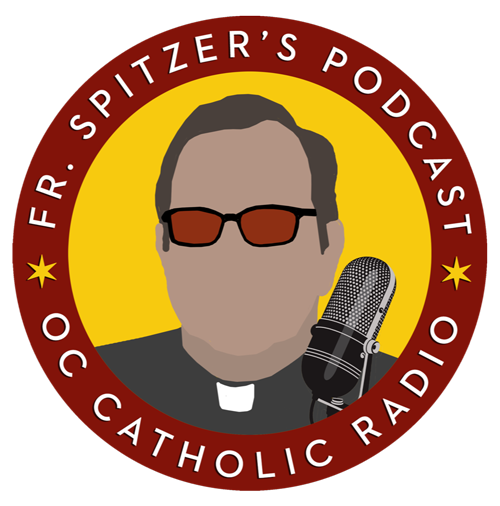NOTRE DAME, Ind. (CNS) — An effort to re-energize a Catholic arts culture in this secular society attracted over 200 established and aspiring writers, artists, musicians and vocalists to the University of Notre Dame for a June 22-24 conference.
The inaugural conference of “Trying to Say ‘God’: Re-enchanting the Catholic Literary Imagination” drew participants from across the United States. The gathering offered support and encouragement to attendees, as well as the opportunity to share interests and ideas about how to express the faith in new ways that will speak to a modern culture that often is hostile to the faith.
Bishop Daniel E. Flores of Brownsville, Texas, set the tone with his opening address, saying that “the whole Christian life is a participation in the expressiveness of the Word. That the church by grace both engenders and needs artisans of words, painters, sculptors, musicians and other sub-creators is akin to an evident truth that flows from revelation.”
The conference program featured a striking variety of nearly 50 diverse presentations and performances on how artists and writers bring God into their works to reach believers as well as nonbelievers. Topics ranged from writing contemporary crime fiction to writing on science, and from writing fantasy to writing devotional works.
For the fine arts, iconographer Joseph Malham discussed rediscovery of the ancient art of icons, Catholic poet Mary Karr presented on “Poetry and Prayer,” and songwriter Jason Harrod performed in an evening concert.
A prevalent topic of discussion that bubbled up inside and outside the conference sessions was the problem of how Catholic writers and artists can get their works published or performed at a time when patronage of the arts is nonexistent, many publications no longer accept poetry or fiction, and print media are struggling or disappearing in this digital age.
One frequent lament was that writers’ works are “not Catholic enough” to be accepted by Catholic publishers, but “too Catholic” to appeal to a secular outlets. This common issue attracted many conference participants to sessions on “The Future of Catholic Literature in a Secular Age” and “The Future of Catholic Publishing.”
In the session on Catholic literature, published writers Kaya Oakes, Joshua Hren, Lisa Ampleman and Randy Boyagoda discussed their own experiences. All acknowledged that magazine and book publishers have to make money to stay afloat, so commercial — rather than cultural and artistic — interests usually dominate publishing decisions.
“Our culture has lost cultural imagination, and the way to recover that is through literature,” but most Catholic publications tend to focus on current events like politics and abortion, said Boyagoda. He is a novelist and a vice president at St. Michael’s College at the University of Toronto, where he also teaches in the “Christianity and Culture” program.
Oakes, author of four books and lecturer in the College Writing Program at the University of California in Berkeley, said that Catholic demographics are quite different now than in the past. Thus, today’s writers have to rediscover their audiences and find new markets in a world of fewer Catholic editors and publishers.
Hren, a writer and assistant professor of English at Belmont Abbey College in North Carolina, said that when he worked as an editor, he saw accomplished Catholic writers who could not find a market for their work, so he started Wiseblood Books to publish good Catholic writing. Both he and Oakes suggested that book clubs are a good way to get readers excited about books.
Ampleman, a poet and writer, as well as managing editor of The Cincinnati Review, said that poetry is a place where people can have a “conversation about the sacred,” but Catholic media do not pay much attention to contemporary literature and poetry.
Representatives of four Catholic publishers responded to many of these issues at the “Future of Catholic Publishing” session that featured Heidi Saxton, acquisitions editor at Ave Maria Press; Matthew Boudway, senior editor at Commonweal magazine; Joseph Durepos, trade books acquisitions editor for Loyola Press; and Gregory Wolfe, a senior fellow at Seattle University’s Institute for Catholic Thought and Culture, and publisher and editor of Image, a quarterly literary journal.
Saxton observed that Catholic publishers are in a state of flux and trying to decide where to go next, which explains why many authors have trouble getting a foot in the door. Thus, she said, “we need to learn new tricks,” new ways of communicating and “fresh voices of new authors.”
Boudway sounded a similar note, saying that “fresh realities” need to be described and expressed and old traditions presented in current language for today’s readers.
Wolfe wants to see a change in Catholic publishing, saying most is “moralistic, pietistic or political,” modalities that he said are “obsolete.” He prefers works that reflect a sense of “felt life,” for he believes those works can help renewal of society and the church.
Durepos, however, was optimistic about the future of Catholic publishing because the Catholic Church is vibrant and growing. He told attendees that they are the future of Catholic publishing, which faces challenges, but new things keep happening so writers should remain hopeful.
“I’m looking for the next bright star, the next terrific author I’ve never heard of before,” Dupreos said.
The conference was planned and organized by published writers Kenneth Garcia, associate director of Notre Dame’s Institute for Scholarship in the Liberal Arts; David Griffith, director of creative writing at the Interlochen Center for the Arts in Michigan; Sam Rocha, assistant professor of philosophy of education at the University of British Columbia; and Jessica Mesman Griffith and Jonathan Ryan, both of the blog Sick Pilgrim.
The group plans biennial gatherings, with the June 2019 event to take place at St. Michael’s College in Toronto, and the 2021 event returning to Notre Dame.










